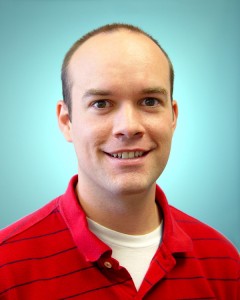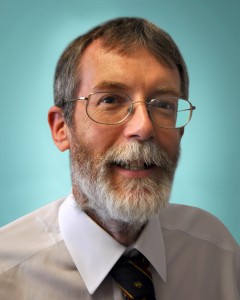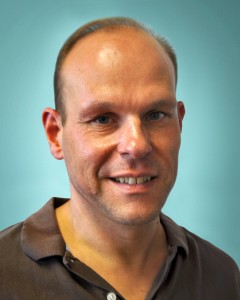

Russell Fitzgerald
6/3/13-7/26/13
Host: Isaac Ekoto
General Electric (GE) research scientist and former Sandian Russell Fitzgerald came to the CRF for two months to work with Isaac Ekoto to evaluate the suitability of employing an in situ carbon monoxide (CO) detection technique in an optically accessible gas turbine test rig located at GE Global Research in New York. GE’s goal is to use this technique within their rig to better understand and ultimately reduce CO emissions at gas turbine electricity generation plants during low-load operation. Russell and Isaac acquired measurements via CO laser induced fluorescence under well controlled conditions and will use these data to validate a fluorescence signal model originally developed by Paul Miles that applies corrections for temperature, pressure, and mixture composition. They also examined irradiance threshold limits for different grades of quartz to understand the impact of the deep ultraviolet laser excitation on the glass casing in the GE test rig. Finally, they evaluated the potential of formaldehyde as a CO surrogate, which is diagnostically easier to detect. Future plans for this collaboration, first envisioned in a Sandia/GE working group meeting, call for implementing the diagnostics in the GE test rig sometime in 2014.
Chris Lietz
7/8/2013-8/16/2013
Host: Jackie Chen
Chris Lietz, a PhD student from the University of Texas at Austin, visited Jackie Chen, Ankit Bhagatwala, and Hemanth Kolla for a month this summer. Chris’s work at the CRF is part of a longer-term collaboration with his advisor, Professor Venkat Raman, in two areas: a posteriori LES/flamelet modeling of premixed flame boundary layer flashback in a turbulent channel flow and the development of a novel DNS/LES modeling framework to assess LES mixing and combustion models at different filter scales.

Stewart Cant
8/12/2013-8/30/2013
Host: Jackie Chen
Professor Stewart Cant from Cambridge University spent a month collaborating with Jackie Chen, Sgouria Lyra, and Hemanth Kolla on fundamental topics related to the structure of turbulent premixed flames in intense sheared turbulence. With his Ph.D. student Ryan Griffiths and in collaboration with Professor Wolfgang Kollmann from University of California, Davis, Professor Cant and the CRF team analyzed and classified the topology of turbulent premixed flames and several kinematic quantities. In particular, they concentrated on a classification for the topology of the reaction progress variable and its dissipation rate, along with the enstrophy and strain rate fields. Professor Cant will continue this collaboration from Cambridge, extending the range of topics to include modeling of premixed flames, specifically, turbulent flame-wall boundary layer interactions and spectral energy transfer in turbulent premixed flames.

Dirk Geyer
7/22/2013-8/23/2013
Host: Rob Barlow
Dirk Geyer, a professor at the Technical College in Darmstadt, Germany, who also has a research affiliation with the Technical University of Darmstadt, spent several weeks working with CRF researchers to extend Raman scattering techniques for measurements in a variety of turbulent hydrocarbon flames. The team focused on Raman spectroscopy of stable hydrocarbon intermediates that appear in flames of dimethyl ether (DME) and the development of detection hardware for polarization separation Raman scattering. This work is part of a long-term collaboration between Sandia and the combustion group in Darmstadt to develop improved detection hardware and methods of analysis of spontaneous Raman scattering measurements in flames.
Justin Kwok
6/17/2013-8/16/2013
Host: Lenny Sheps
During his 10 weeks as an undergraduate summer intern, Justin Kwok worked with Leonid Sheps and Judit Zádor on an experimental project that investigates fundamental chemical kinetics relevant to combustion—work that aligns with Justin’s chemical engineering major at the University of Southern California. While at the CRF, he used laser-induced fluorescence (a very sensitive optical detection method) to monitor the reactions of hydroxyl radicals with trans-2-butene over broad ranges of temperature (300–800 K) and pressure (1–20 atm). The experimental data that Justin collected will help validate the chemical mechanism for the reaction of OH + butene, which has broader implications for the combustion models of other unsaturated hydrocarbons and alcohols.